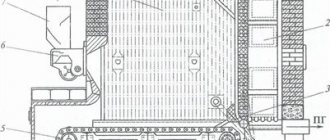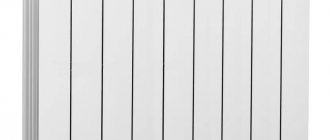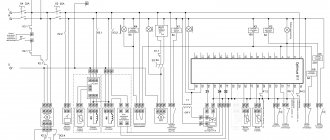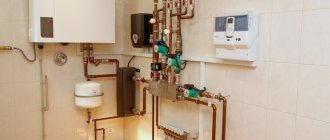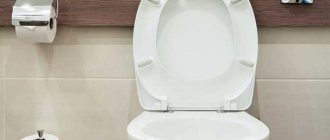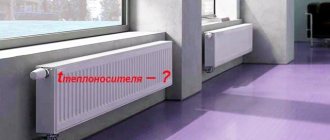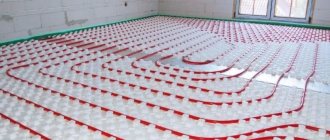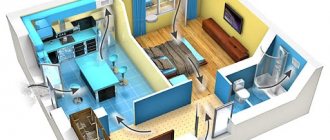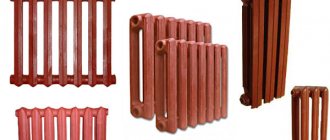Nowadays, it is impossible to imagine your life without ventilation systems. They are installed in industrial buildings, offices, educational institutions, shops, and apartments. The operation of these systems is unthinkable without the use of exhaust fans of various capacities. A widespread element of apartment ventilation is the kitchen hood. It can have different shapes, sizes, designs.
The amount of purified air in the room will depend on the calculation of the power of the kitchen hood fan.
Exhaust ventilation in the kitchen
But external beauty is not the most important thing. The main task of this device is to rid the kitchen of odors, burning, soot and grease that appear during cooking. Exhaust ventilation removes fumes emanating from various types of heating devices. It prevents the appearance of dirty deposits on the ceiling and wall surfaces. This allows you to perform cosmetic repairs much less frequently, which will save a significant amount of money. It will also take less time to carry out general cleaning.
A device capable of passing a certain amount of air through its filters can cope with the task of cleaning the atmosphere in a room. And for this you need to select a device with a fan of the required power. How to calculate the power of a device?
Design air exchange
The calculated value of air exchange is taken to be the maximum value from calculations of heat input, moisture input, harmful vapors and gases, sanitary standards, compensation for local exhaust hoods and the standard air exchange rate.
The air exchange of residential and public premises is usually calculated according to the air exchange rate or according to sanitary standards.
After calculating the required air exchange, an air balance of the premises is compiled, the number of air distributors is selected, and an aerodynamic calculation of the system is made. Therefore, we advise you not to neglect the calculation of air exchange if you want to create comfortable conditions for your stay in the room.
Fan power calculation
To calculate the fan power, you need to do the following:
An example of calculating the performance of a kitchen hood fan.
- Using a tape measure, measure the size of the kitchen and determine its volume in meters. To do this, the length must be multiplied by the width and height. The BTI documents indicate the area of the premises. Example: the area of the kitchen area is 10 m². The height from floor to ceiling is 3 m. We multiply the area by the height and get 30 m³. This is the size of the kitchen.
- Next, the value characterizing air exchange is calculated. To do this, you need to multiply the volume of the kitchen by the number of complete air updates per hour. Building codes and regulations (SNiP) provide for an air exchange rate of 10-12. Thus, to calculate the capacity of the exhaust system, you need to multiply 30 m³ by 12. The result is a figure of 360 m³/hour. This much air must be renewed every hour.
- To carry out exchange in such a volume, you need a fan with a power of 400-800 m³/hour. But standard ventilation ducts can only pass about 180 m³. Therefore, a fan will not help much here.
- In this case, a recirculating exhaust system will help, which passes air through filters and sends it back into the room. Overcoming the resistance of the filters also requires power. Therefore, 40% should be added to the calculated figure. The result will be 560-1120 m³. This should be the power of the hood fan in a kitchen measuring 30 m³.
- In some cases, you can do without a ventilation duct. To do this, the exhaust fan is installed in a specially equipped opening in the wall, in the ceiling or at the junction of the ceiling and wall. This installation allows the use of a less powerful fan.
Exhaust power for different rooms.
This is just a simple calculation of the required exhaust fan power. If the kitchen does not have doors, then you also need to take into account the volume of the adjacent room. So, the formula for calculating fan power for general cases is: room width x length x height x exchange rate = required value. You can calculate the volume of the room without any problems. It is enough to measure the length, width and height and multiply them.
Section shapes
According to the cross-sectional shape, pipes for this system are divided into round and rectangular. Round ones are used mainly in large industrial enterprises. Since they require a large area of the room. Rectangular sections are well suited for residential buildings, kindergartens, schools and clinics. In terms of noise level, pipes with a round cross-section are in first place, since they emit a minimum of noise vibrations. Pipes with a rectangular cross-section produce slightly more noise vibrations.
Pipes of both sections are most often made of steel. For pipes with a round cross-section, steel is used that is less hard and elastic; for pipes with a rectangular cross-section, on the contrary, the harder the steel, the stronger the pipe.
In conclusion, I would like to say once again about the attention to the installation of air ducts and the calculations carried out. Remember, the more you do everything correctly, the more desirable the functioning of the system as a whole will be. And, of course, we must not forget about safety. Parts for the system should be selected carefully. You should remember the main rule: cheap does not mean high quality.
Air change rate
The multiplicity for premises of different types is determined as follows:
| Room type | Multiplicity |
| Bakery | 20-30 |
| Greenhouse | 25-50 |
| Office | 6-8 |
| Bathroom, shower | 3-8 |
| Salon | 10-15 |
| Restaurant, bar | 6-10 |
| Bedroom | 2-4 |
| Lobby | 3-5 |
| Classroom at school | 2-3 |
| Cafeteria | 10-12 |
| A hospital room | 4-6 |
| Shop | 8-10 |
| Basement | 8-12 |
| Kitchen in a house or apartment | 10-15 |
| Gym | 6-8 |
| Attic space | 3-10 |
| Catering kitchen | 15-20 |
| Pantry | 3-6 |
| Changing room with shower | 15-20 |
| Laundry | 10-15 |
| Toilet in the house, in the apartment | 3-10 |
| Conference hall | 8-12 |
| Living room | 3-6 |
| Billiard room | 6-8 |
| Public toilet | 10-15 |
| Garage | 6-8 |
| Meeting room | 4-8 |
| Utility room | 15-20 |
| Library | 3-4 |
| Dining room | 8-12 |
Table for calculating the minimum performance of the hood relative to the volume of the kitchen.
The highest multiplicity is chosen for use in rooms with many people, high humidity and temperature, a lot of dust and strong odors. In a kitchen with an electric hob, you can choose a lower indicator, with a gas stove - a higher one. This is due to the fact that gas emits combustion products when the stove is turned on. The fan, selected taking into account the above data, can be mounted in a wall, window, or ceiling of the room.
general description
Fans are machines designed to move various air-gas mixtures with an increase in their pressure to a maximum value of 12-15 kPa. Distinctive features of the fans are a simple single-stage design and operation at low peripheral shaft speeds. Fans consist of a housing, an impeller with blades mounted on a shaft inside the housing, and a drive. Electric motors are used to drive fans.
Fans are widely used both in everyday life and in industry. Industrial fans are subject to certain requirements due to more stringent operating conditions. In addition to compliance with the parameters of the ongoing technological process, industrial fans must meet high requirements for design reliability and safety.
Fans are used to transport various air-gas mixtures, which may differ in critical temperatures, abrasive properties, dust and moisture content. Therefore, an essential criterion in the manufacture of fans is the correct choice of material design.
Fans for bathrooms and toilets in the 220pro.ru catalog
Our store offers well-known and popular brands of household bathroom fans:
| Soler & Palau | Blauberg | Fresh | Era | Vents | MMotors JSC |
Let's divide them into groups and get to know each other better.
For a city bathroom or standard-sized bathroom, the most popular type of exhaust fan is a model with a power of up to 100 m3/hour
The catalog contains:
Surface-mounted axial fans
Soler & Palau
| SILENT-100 CZ SILVER DESIGN-3C | SILENT-100 CZ GOLD | SILENT-100 CHZ | SILENT-100 CMZ |
| ECOAIR DESIGN 100 H (with humidity sensor) | ECOAIR DESIGN 100 M (with cord) | ECOAIR DESIGN 100 S (basic model) | EDM 80L |
| SILENT-100 CZ | |||
| Power 65-95 m3, noise 26.5-33 dB, the basic Silent model has a check valve and quiet running bearings (CZ), other models can optionally be added - timer (R), humidity sensor (H), cord switch (M ). | |||
Blauberg
| Aero Still Vintage 100 | Aero Still 100 | Aero Still 100 T | Sileo 100 |
| Power 84, 97 cu.m. meters, noise level 25 dB, additional options include cord switch and timer. | |||
Era
| FAVORITE 4 | COMFORT 4 | DISC 4 | E 100 S |
| OPTIMA 4 | |||
| Power 80-90-95-97 m3, noise level 35 dB. Models with additional options have additional coding 01 - power cable and switch, 02 - traction motor, C - check valve. | |||
MMotors JSC
| MM-100 S (basic) | MM-100 S OK (with check valve) |
Power 60 cubic meters, noise 25 dB, ultra-thin models with a thickness of 4 cm.
Duct axial fans
For installation in a round air duct, duct models are used. Among low-power ones we offer Bulgarian MMotors JSC
| BO 90 | BO 90T |
Power 50 m3, noise 36 dB, operating temperature +100-150°C.
Centrifugal fans
Due to the design and the creation of additional traction, such hoods, even at low power, are more efficient than axial ones. They cost more, so they are taken less often. Although the “usefulness” of a centrifugal fan quickly pays for its cost.
The main operating mode is minimum speed and minimum energy consumption. The hood works great for a long time in the background for routine cleaning. When the humidity rises, the maximum mode is switched on and the air in the bathroom is quickly replaced.
Among the centrifugal ones we offer a fan from the company Era
| SOLO 4C era |
Three-speed, capacity 42/64/100 m3, noise level 25.8-30 dB, equipped with a check valve and filter. Suitable for wall/ceiling installation and vent mounting.
In new houses, with large apartments, townhouses and cottages, the bathrooms are more spacious and for cleaning they are equipped with hoods with a capacity of 100 to 400 m3 per hour
The 220pro.ru catalog presents the following models:
Axial fans for wall or ceiling
Blauberg
| Aero Chrome 100 | Aero Still Vintage 125 | Aero Still Vintage 150 | Aero Still 125 |
| Aero Still 150 | Deco 100 (ceiling) |
Power 102, 154, 254 m3, noise level 31-33-38 dB, all models have a check valve, additional options are indicated by letter markings, T - with a timer, ST - with a cord and a timer. Ceiling ones have a power of 105 cubic meters and a noise level of 37 dB.
Soler & Polau
| SILENT-200 CRZ (with timer) | SILENT-300 CHZ (with timer and humidity sensor) | EDM 200C | Decor 200С |
Capacity 175, 180, 280, 320 m3, noise level in the SILENT series 35-36 dB, in other models 42-47 dB.
Era
| ERA 5S | ERA 6C (with check valve) | SLIM 5 | SLIM 6-02 (with pull cord switch) |
Capacity 140-183, 250-290 m3, noise level 30-33, 36-38 dB.
FRESH
| PAX Norte (quietest model at 17 dB) | INTELLIGENT White | INTELLIGENT Black |
Capacity 110-132m3, noise 17-22dB. New generation fans. Equipped with a smart control system, speed switching mode, and sensors. They can work automatically using a built-in program or run in the selected mode via a smartphone or computer.
Duct hoods
Blauberg
| Tubo 100 | Tubo 125 | Tubo 150 | Turbo 100 |
| power 137, 245, 361 m3, noise level 38-39-40 dB. | two-speed, power 170/220 m3 per hour, noise level - 27/32 dB, wall or ceiling mounting. | ||
Soler & Palau
| TDM100 | TDM200 | TDM300 | Silentub 100 |
| power 110-200-300 cubic meters, noise 40-45 dB, suitable for short round air ducts and for installation in a ventilation hole in the wall. | power 100 cubic meters, noise 37.5 dB, for short round channels and for wall mounting. | ||
Era
| PRO 4 | PRO 5 | PRO 6 |
productivity 115, 195, 320 cubic meters per hour, noise from 32 to 36 decibels, mounted on a wall or ceiling, both exhaust and air supply work.
Vents
| iFan D100/125 |
intelligent, maximum power 106 m3, in quiet mode - 72. noise level 31 dB (22 in quiet). Basic humidity control, timer, additional speed control - motion sensor operation. Suitable for non-stop ventilation at a capacity of up to 40 m3/hour.
Some useful tips and notes
As can be understood from the formula (or when carrying out practical calculations on calculators), air speed increases as the pipe size decreases. A number of advantages can be derived from this fact:
- there will be no losses or the need to lay an additional ventilation pipeline to ensure the required air flow if the dimensions of the room do not allow for large ducts;
- it is possible to lay smaller pipelines, which in most cases is simpler and more convenient;
- the smaller the diameter of the channel, the cheaper its cost; the price of additional elements (dampers, valves) will also decrease;
- the smaller size of the pipes expands the installation possibilities; they can be positioned as needed, practically without adjusting to external constraining factors.
However, when laying air ducts of a smaller diameter, it must be remembered that as the air speed increases, the dynamic pressure on the pipe walls increases, and the system resistance also increases, which will require a more powerful fan and additional costs. Therefore, before installation, it is necessary to carefully carry out all calculations so that savings do not result in large costs or even losses, because a building that does not comply with SNiP standards may not be allowed to operate.
